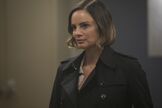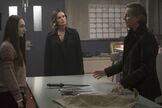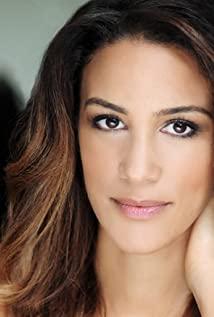This is a controversial drama. The whole story of the drama is centered on a "Fairy Tale Town" (Storybrook) in Maine. This is a "cold fairyland" cursed by an evil queen, inhabited by a passing through. All kinds of fairy tale characters, they were all washed away by the evil queen, and they were imprisoned in the small town forever, until one day, a girl named Emma gave guidance to the adopted son of someone else (cum evil queen) many years ago. Coming down here, I began to welcome her destiny to lift the curse...
This setting is actually nothing new. The most direct question comes from the DC Comics sub-label Vertigo comics called "Fables" (Fables). Serial comics, this serial work is about the story of the fairy tale world being invaded and the people falling into the human world. In "Adult Fairy Tales", these fairy tale characters also established a "fairy tale town" in New York ( Fabletown)—In fact, in 2008, ABC bought the TV adaptation rights of "Fables", but it hasn’t been filmed for a long time.
From this point of view, accusing "Fairy Tale Town" of copying the originality of "Fables" is not entirely groundless. However, the two screenwriters of "Fairy Tale Town" Adam Horowitz and Edward Kedis also participated in the production of "Lost", so audiences who have watched "Lost" can easily learn from "Fairy Tale Town". Find a familiar shadow—Of course, it’s not about the characters, but about the narrative mode: "Fairy Tale Town", like "Lost", is a double clue narrative, one clue tells about Emma's adventures after coming to "Fairy Tale Town" Story; another clue depicts the history of these fairy tale characters in the fairy tale world. "Fairy Tale Town" is set as a magic island, where people can't get out, and ordinary outsiders can't get in. Obviously, this basically isolated space setting is exactly the same as the tropical desert island in "Lost"; The background flashbacks of the characters in "Lost" completely correspond to the account of the character's history in "Fairy Tale Town".
It is said that Horowitz and Kiddes had the idea of "Fairy Tale Town" long before they took over "Lost", and the similarity in the narrative structure and original creativity does not constitute a clear accusation of "plagiarism". From the perspective of "Fairy Tale Town" itself, it is indeed the essence of "Lost". With the unfolding of the story, the mysterious history of each fairy tale character is gradually unfolded, love, betrayal, hatred, relationship, and various characters. The entanglement is entangled, and it can also correspond to the current "Fairy Tale Town" story. The plot of the entire first season is like boiling water on a stove, gradually boiling and fascinating. Moreover, due to the specific nature of the characters, a lot of foreshadowing work has been omitted from the screenwriter-Snow White, Prince Charming, the Seven Dwarfs, Cinderella, Little Red Riding Hood, the dwarf monster, the fairy godmother, these famous fairy tale characters who do not know , Which do not know? Moreover, with the back of the big Disney tree, Horowitz and Kiddis happily took Disney characters to a spoon - even some of the "unknown" characters in the cartoons were also given by the two screenwriters. Added the name.
Of course, the reconstruction of heavy tastes in "Fairy Tale Town" is also an indisputable fact. If you count it down, in fact, the whole western magical cultural craze since the 21st century has run through a certain "heavy taste" tone: from "Harry Wave" Counting from the popular screens of "Special" and "Lord of the Rings", those black magic, curses, monsters and the like are flooded with "cold wonderland". In the past two years, with the successive appearances of film and television works such as "Heavy Taste Edition", "Little Red Riding Hood", "The Grimm's Fairy Tales", "Snow White and the Hunter", the adult-oriented adaptations of classic fairy tales have become spectacular-by comparison. In other words, nonsensical spoofs like "Shrek" already seem to be much more tender.
In "Fairy Tale Town", various fairy tale characters break the barriers and become entangled in an unprecedented way-for example, Snow White's stepmother, the evil queen, had a relationship with Aladdin Djinn, and one of the seven dwarfs also had a relationship with the fairy godmother. There was an unruly love. But behind the whole story, there is a certain kind of promotion of "motherhood" (and with the feminist color). Single mother Emma, the evil queen's stepmother, and the evil queen's evil mother seem to constitute a lost motherhood. The hidden line-"mother" against "mother", almost constitutes the main theatrical conflict in "Fairy Tale Town" (the only exception is the dwarf monster, but this feminine single father also appears to be full of motherhood from time to time). The setting of Emma's role also has a strong "fate theory" color. She was born against the evil queen, which is actually the same as Harry Potter, who was born as Voldemort's nemesis.
The original creative gimmick of "Fairy Tale Town" lies in the rewriting of the classic fairy tale "happy ending". In the poisonous curse of the evil queen, the fairy tale characters are forced to survive according to another imperfect ending. However, for the audience in front of the TV Said, I am afraid that this is the real "end of the fairy tale" in line with the logic of reality.
(Published in "People" 2012 Issue 6)
View more about Once Upon a Time reviews











